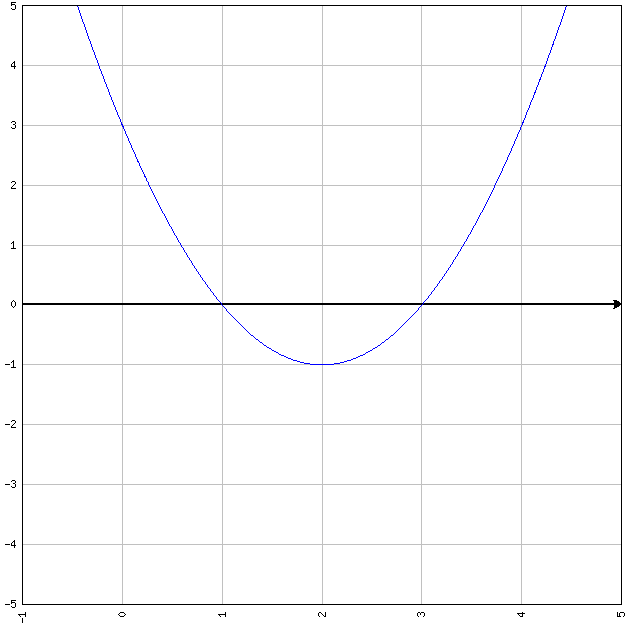Inequalities: Tips and hints
1.
You can only add inequalities when their signs are in the same direction:If \(a>b\) and \(c>d\) (signs in same direction: \(>\) and \(>\)) --> \(a+c>b+d\).
Example: \(3<4\) and \(2<5\) --> \(3+2<4+5\).
2.
You can only apply subtraction when their signs are in the opposite directions:If \(a>b\) and \(c<d\) (signs in opposite direction: \(>\) and \(<\)) --> \(a-c>b-d\) (take the sign of the inequality you subtract from).
Example: \(3<4\) and \(5>1\) --> \(3-5<4-1\).
RAISING INEQUALITIES TO EVEN/ODD POWER1. We can raise both parts of an inequality to a positive even power if we know that both parts of an inequality are non-negative (the same for taking a positive even root of both sides of an inequality).For example:
\(2<4\) --> we can square both sides and write: \(2^2<4^2\);
\(0\leq{x}<{y}\) --> we can square both sides and write: \(x^2<y^2\);
But if either of side is negative then raising to even power doesn't always work.
For example: \(1>-2\) if we square we'll get \(1>4\) which is not right. So if given that \(x>y\) then we cannot square both sides and write \(x^2>y^2\) if we are not certain that both \(x\) and \(y\) are non-negative.
2. We can always raise both parts of an inequality to a positive odd power (the same for taking a positive odd root of both sides of an inequality).For example:
\(-2<-1\) --> we can raise both sides to third power and write: \(-2^3=-8<-1=-1^3\) or \(-5<1\) --> \(-5^3=-125<1=1^3\);
\(x<y\) --> we can raise both sides to third power and write: \(x^3<y^3\).
MULTIPLYING/DIVIDING TWO INEQUALITIES1. If both sides of both inequalities are positive and the inequalities have the same sign, you can multiply them.For example, for positive \(x\), \(y\), \(a\), \(b\), if \(x < a\) and \(y < b\), then \(xy < ab\).
2. If both sides of both inequalities are positive and the signs of the inequality are opposite, then you can divide them.For example, for positive \(x\), \(y\), \(a\), \(b\), if \(x < a\) and \(y > b\), then \(\frac{x}{y} < \frac{a}{b}\) (The final inequality takes the sign of the numerator).
MULTIPLYING/DIVIDING AN INEQUALITY BY A NUMBER1. Whenever you multiply or divide an inequality by a
positive number, you must
keep the inequality sign.
2. Whenever you multiply or divide an inequality by a
negative number, you must
flip the inequality sign.
3. Never multiply (or reduce) an inequality by a variable (or the expression with a variable) if you don't know the sign of it or are not certain that variable (or the expression with a variable) doesn't equal to zero.SOLVING QUADRATIC INEQUALITIES: GRAPHIC APPROACHSay we need to find the ranges of \(x\) for \(x^2-4x+3<0\). \(x^2-4x+3=0\) is the graph of a parabola and it look likes this:

Intersection points are the roots of the equation \(x^2-4x+3=0\), which are \(x_1=1\) and \(x_2=3\).
"<" sign means in which range of \(x\) the graph is
below x-axis. Answer is \(1<x<3\) (between the roots).
If the sign were ">": \(x^2-4x+3>0\). First find the roots (\(x_1=1\) and \(x_2=3\)).
">" sign means in which range of \(x\) the graph is
above x-axis. Answer is \(x<1\) and \(x>3\) (to the left of the smaller root and to the right of the bigger root).
This approach works for any quadratic inequality. For example: \(-x^2-x+12>0\), first rewrite this as \(x^2+x-12<0\) (so that the coefficient of x^2 to be positive. It's possible to solve without rewriting, but easier to master one specific pattern).
\(x^2+x-12<0\). Roots are \(x_1=-4\) and \(x_1=3\) --> below (
"<") the x-axis is the range for \(-4<x<3\) (between the roots).
Again if it were \(x^2+x-12>0\), then the answer would be \(x<-4\) and \(x>3\) (to the left of the smaller root and to the right of the bigger root).
Please share your Inequality properties tips below and get kudos point. Thank you.






